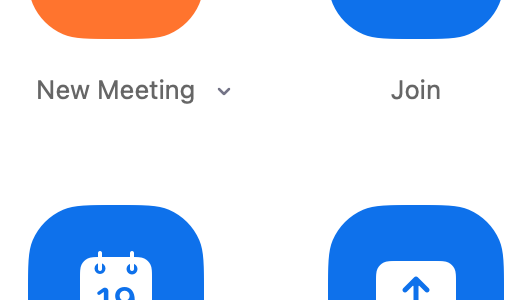While we either have or are contemplating a return to our offices, digital communication, whether that be email, messaging, Zoom or MS Teams is here to stay. Being effective in how we use these different communication tools will be critical to high performance and team management.
These are my thoughts on some good habits using each of these platforms. It is based on work by Erica Dhawan in her work on “Digital Body Language”, with some of my own ideas thrown in.
My email top tips

1. Reply to emails promptly.
If you want to take some time to consider your response, then at least acknowledge receipt and let them know when you’ll get back to them. If I hear nothing back for a couple of days, I’m unsure whether you’ve received my email, are deliberately ignoring me, or it simply got lost in the numerous emails you receive every day.
2. Use the subject line.
We receive so many emails these days, your email will get better attention if this subject line is informative. If you need a response by a certain date, say so – eg “Input required by COB 28 February”. And if the purpose of an email chain changes update the subject line.
3. Match the tone and culture of the recipient or organisation.
When I first moved from being a CFO to a consultant, I needed to change my email style from short sharp and directive, to warm engaging and chatty. The first style didn’t use salutations, or even always full sentences (depending on my audience of course), whereas my emails these days are still direct and to the point, but will always start or finish with more personal comments.
4. Use ‘reply all’ sparingly.
When replying to an original message that includes many recipients, consider carefully the need to ‘reply all’. If you don’t need to do this, don’t. Be selective. There’s nothing more annoying than receiving many messages on the same topic that you don’t really need to see. And worse still, sometimes confidential information is shared inappropriately.
5. Consider a phone call instead
If you find yourself emailing back and forth dealing with a complex issue, consider making a phone call instead. Sometimes it is quicker and more effective to have a live conversation rather than try to communicate nuances by email. If required, you can always confirm the outcome of a conversation with an email.
And remember that emails are included in the scope of official documentation so, in the public sector, may be subject to Freedom of Information requests.
Group chats/whatsapp/instant messaging (IM)
The world of work is changing, and some teams are working more flexibly, either in terms of working from home or the hours worked by different team members. Some workplaces are using less formal methods of communicating in the form of messaging platforms.
My IM top tips

1. Increased clarity.
One of the major benefits of this form of communication is the speed. But I think this is one of the trickiest forms of communication. It’s still written, so is missing many non-verbal cues. It is therefore really important to be clear. But the very nature of the platform lends itself to short, sharp communication. So the challenges are: being clear, without being long-winded; conveying tone without becoming unprofessional eg inappropriate emojis or shorthand; responding quickly without sacrificing the time needed to fully consider the issues.
2. Use only for simple communications
It is important to think carefully about what this platform is used for. Using it for simple information sharing eg ‘new virus alert advised by IT – check your email’, or for arranging simple tasks eg ‘can you get that report to me by 4pm tomorrow?’ is good. Using it for more complex issues such as seeking input to a policy document, or dealing with sensitive or confidential information, or when you need to keep an official record of a conversation, is better dealt with in a different format.
3. Respect boundaries.
Boundaries can become blurred, particularly with instant messaging. People tend to expect quick replies in this medium, and with flexible working hours blurring, what may be within your work hours, may not be for someone else. Be mindful of this within a team. This works both ways. Try not to use this medium if you know someone is outside their work hours, unless it is really necessary for you to get a response right now. Similarly, if you find yourself replying to messages outside your work hours, reminding the sender that you might miss out-of-hours messages might be useful. And, similar to email, if you can’t respond to a message for a period of time, let the sender know, eg ‘in a meeting right now – will get back to you in an hour’.
4. Develop a shorthand.
A team shorthand can be useful – a set of agreed acronyms that allow for fast and clear communication eg FYI NAR (for your information, no action required), NNTR (no need to respond), SOS (urgent).
Videoconference (VC)
By now, we are all much more used to using videoconference platforms to connect. However, this doesn’t mean we are all doing it well. It’s still important to plan for these connections and structure them well. This is even more important than in-person meetings, as it is harder to maintain the attention and engagement of participants on line.

My VC top tips
1. Use introductions.
Make sure everyone knows who’s who, and what their role and purpose is in the meeting. This is both to ensure participants know what is expected of them as well as understanding the role of everyone else in the ‘room’. Allow time for this.
2. Have a clear structure.
Have an agenda, a clear purpose or intention for the meeting and a limited timeframe that is clearly communicated prior to the meeting. Stick to it.
3. Plan how you will run the meeting
Think through how you want the meeting to run. How do you want people to interact in the meeting? This may depend on the purpose of the meeting and the number of participants. Will you ask everyone to mute and raise their electronic hand to speak. Will you allow the use of the chatbox? Do you need to let people know how to do this?
4. Use a moderator
Consider the complexity of the meeting. A one-to-one meeting obviously doesn’t need a moderator. But with many more participants, a moderator is essential to assist participants with connection or technical issues, curate the chat box and keep the meeting on scope.
5. Cameras on
Best practice is to request everyone have their cameras on. This provides access to body language cues and increases engagement. But consider that there may be valid reasons why someone chooses or cannot always have their videos on. Perhaps they have limited bandwidth, are sharing spaces with others or are simply exhausted being on camera in meetings all day. And remember, even if you have your camera on, with larger meetings, you may not appear on the screen until you actually speak, so the convenor may not see your physical indication that you want to speak.
6. Encourage participation
When you invite input or ask a question, pause for longer than you would otherwise. Without being able to read body language, people are naturally more hesitant to speak up and may take longer to respond to a question. And remembering and finding the unmute button also takes an extra few seconds. Specifically ask those that haven’t spoken if they have anything to add, without putting undue pressure on them.
7. Different conversations
When physically in the workplace, we seamlessly shift from one kind of conversation to another. The ‘hi, how are you, how was your weekend’ conversation easily shifts into ‘what are you working on and do you need anything’ through to ‘by the way, we need to get the monthly report done a day early this month as the Minister is going on leave’. Each of these conversations serve a different purpose in the workplace – rapport and connection, resource allocation, delegation, coordination, collaboration, information sharing etc.
When connecting online it may need a bit more attention to meet all these different needs. Trying to fit them all into a single weekly meeting may work, or it may not. Having the right people at the right meetings, with the right intentions is important so as not to waste time of those who don’t need to be there for certain conversations, but also to not exclude some team members from what they might perceive as important conversations.
You may need to allow extra time for the informal ‘water-cooler’ chat as this is impossible from home unless people put in personal concerted effort to create opportunities to connect.
8. Keep to time
Start on time. Make a request of participants that they show up on time and communicate if they cannot do this. Schedule shorter meetings with specific purposes. Finish on time. Perhaps schedule to finish 5-10 minutes before the hour, to allow people a break before they login for their next online meeting.
Be respectful of others’ schedules. What are their hours, their commitments, are they juggling home schooling?
Need help?
If you think there may be something not quite working about your communication strategy, take some time to consider these tips. Coaching can help to sort through your options, and develop a strategy that is authentic and constructive to improve team coherence and performance.
If you would like to schedule a coaching session with me, you can do so at this link.
Acknowledgement: Based on work by Erica Dhawan “Digital Body Language”










